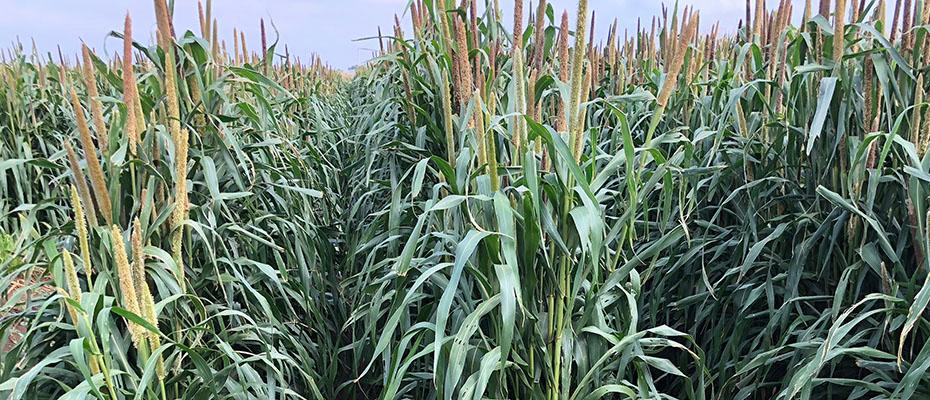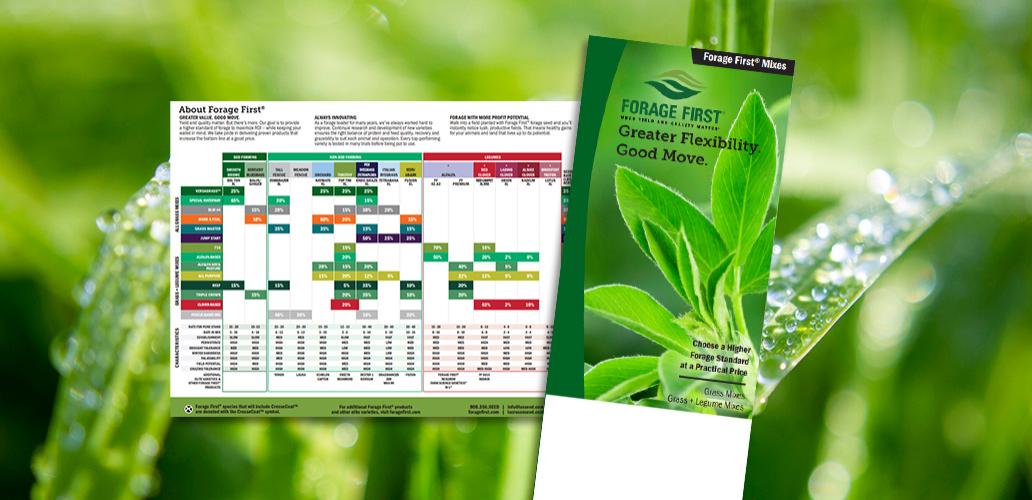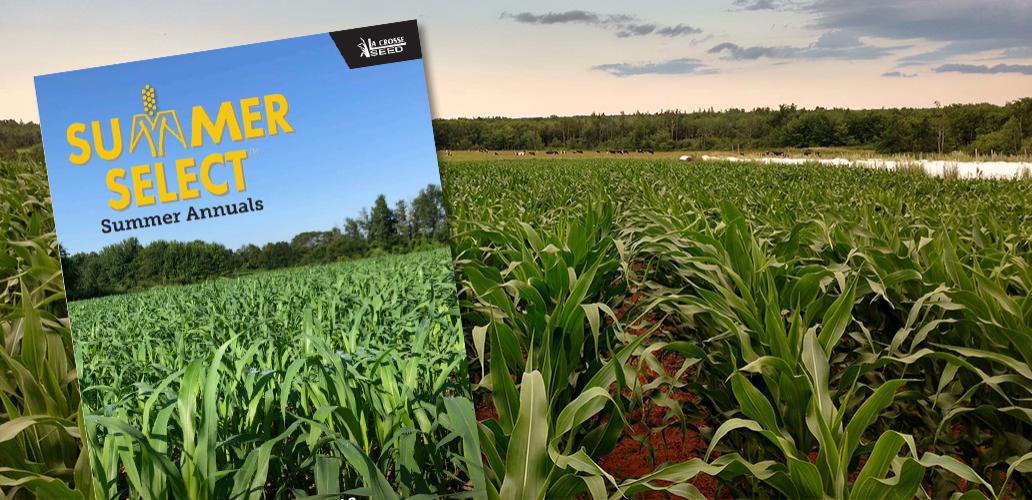Forage First Guide I Summer Select Guide
Greater Value. Good Move. Yield and quality matter. But there’s more. Our goal is to provide a higher standard for forage to maximize ROI– while keeping your wallet in mind. We take pride in delivering proven products that increase the bottom line at a good price.

Summer Select Hercules BMR BD pearl millet hybrid is an enhanced summer annual product that delivers a versatile, high quality forage product to dairy, beef, sheep and goat producers. This dwarf-type summer annual is an excellent forage producer with all the attributes that the producer is looking for, such as: rapid growth and regrowth, unsurpassed water use efficiency, drier stalks for exceptional dry down for hay, excellent disease resistance and resistance to aphids. Plus with no risk of prussic acid poisoning! This is THE summer annual that needs to be on your acres and fed to your livestock. You will not be disappointed.
CHARACTERISTICS:
1 = Poor; 5 = Excellent
Recovery After Cutting: 5
Leaf Disease Resistance: 5
Sugarcane Aphid Tolerance: 5
Single Silage Cut: 4
Rapid Dry Down: 4
Traits: BMR 6 (Brown Mid-Rib); BD (Brachytic Dwarf)
Uses:
- Grazing – recommended begin height is 20-24 in. with a stop height of 6-7 in.
- Hay/Baleage – suitable for dry hay or baleage at 40 days or 40 in. tall
If desired, this product can be planted in rows and harvested similar to a forage sorghum or silage corn
SEEDING:
Planting Time:
May-July
Emergence (days): 3-5
Seeding Information:
Seeds/lb.: 50,000
Soil Temperature: 65 F
Depth (in.): 1/2-1
Maturity: Med
Dryland Seeding (lbs./acre): 10-15
Irrigation/Hi-Rain Seeding (lbs./acre): 10-15 (up to 20)
- Planting date should be after the day length exceeds 12 hrs. and 20 mins.
- Can be no-tilled into stubble of winter and spring crops
- Do not plant in soil with pH greater than 7.5 as iron chlorosis can be a problem
MANAGEMENT:
Fertility:
- Under favorable conditions, 1-1.25 lbs. of nitrogen/day of planned growth should be available for maximum production, with little risk for nitrate poisoning. For example, for a planned 40 day harvest, 40-45 lbs. of N should be available.
- Keep N/sulfur levels at 5:1 to ensure N is converted to protein
- Potassium levels should be maintained similar to that of corn
- If soil pH is greater than 7.2, an application of iron may be necessary to prevent iron chlorosis
Harvest & Management Tips:
- Dry hay and/or baleage are applicable where and when proper harvest management is followed. Dry hay is suited for areas with less moisture and humidity; baleage offers more flexibility in all other areas.
- Harvest at proper moisture (yield and quality are maximized between 60-72%)
- Wide windows are required for baleage products to ensure rapid dry down
- For silage, keep chop length uniform (around 1/2 in.)
Avoiding Nitrate & Prussic Acid Poisoning:
- Do not harvest drought stricken plants within four days following a heavy rain
- Do not apply N prior to expected drought periods
- If in doubt, cut at higher stubble height as nitrates tend to accumulate in the lower stalk
- When questions about livestock safety remain, get forage tested promptly
Ratings
Scale 1-9, where 9 = best or most pronounced
SC Aphid Tolerance
Disease Resistance
Cutting Recovery
- BMR trait brings greater digestibility
- Versatile hybrid suitable for silage, grazing & dry hay
- Dwarf gene increases leaf:stem ratio & improves standability
- Enhanced palatability, digestibility & overall utilization
- No prussic acid or sugarcane aphid concerns

.png)
.png)


.png)










